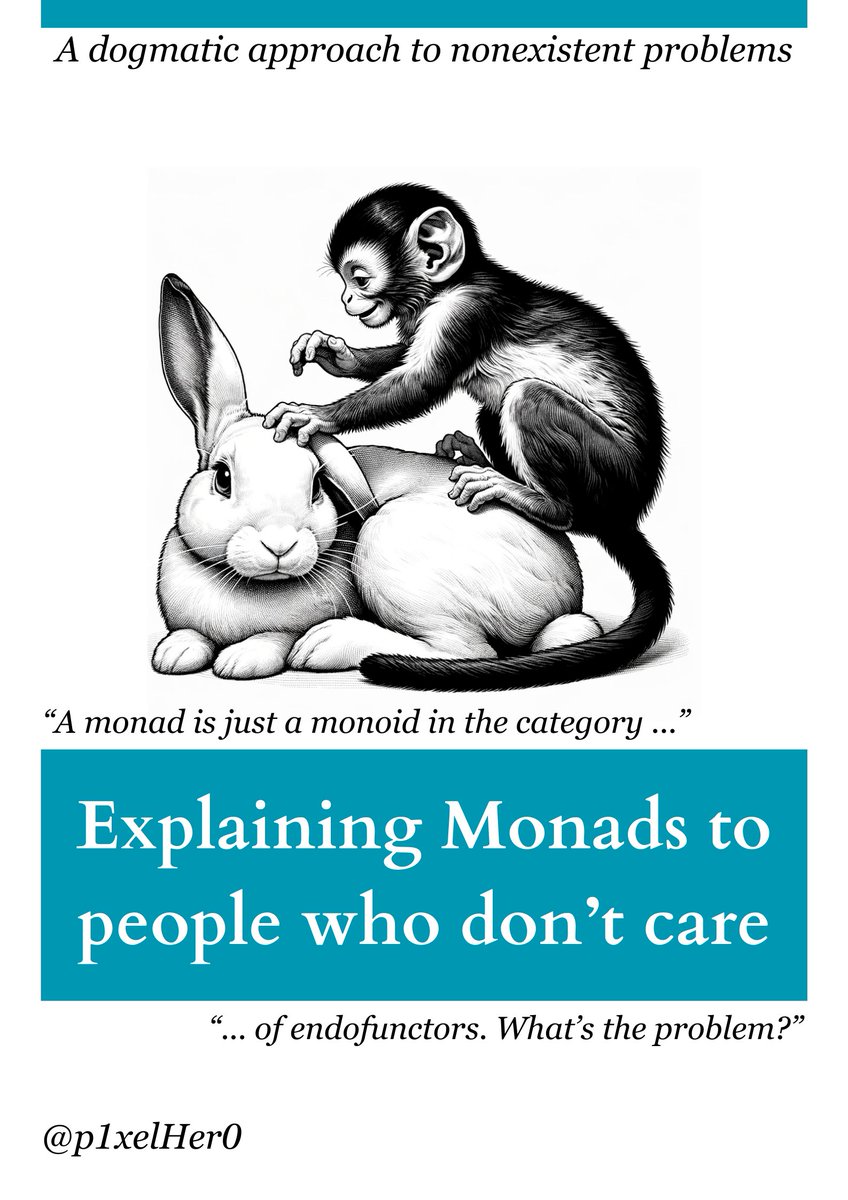
In the grand tapestry of Computoria, a realm of endless abstraction and theoretical constructs, there exists a concept so esoteric, so shrouded in the mystique of functional programming lore, it has become the quintessential quixotic quest of the learned: the Monad. This elusive entity, revered by the acolytes of Haskell and worshipped in the temples of Category Theory, stands as both a pinnacle of programming elegance and a source of endless debate.
Our narrative unfolds with a zealous coder named Morgan, a devout follower of the functional programming paradigm, who embarked on a mission of utmost gravity: to illuminate the minds of the uninitiated with the divine knowledge of Monads. Armed with the sacred texts of Haskell and the blessings of Lambda, Morgan sought to traverse the great divide between the realms of the Knowing and the Unconcerned.
Morgan's journey led them to the bustling Agora of Mainstream, a place where the denizens were more concerned with the practicalities of code that runs and ships than with the purity of abstract constructs. It was here that Morgan stood, a lone preacher in the wilderness, proclaiming the gospel of Monads to any who would listen.
"A Monad," Morgan began, with the fervor of a true believer, "is but a monoid in the category of endofunctors. What's the problem?" The words, spoken with the conviction of one who has seen the light, hung in the air like a spell, incomprehensible yet mesmerizing.
The crowd, a motley assembly of developers, project managers, and UI/UX designers, looked on with a mixture of curiosity and bewilderment. Monoids? Endofunctors? These were not terms that solved the pressing issues of deadlines, user experience, or scalability. Yet, there was something in Morgan's impassioned plea that held their attention, if only for a moment.
Morgan pressed on, undeterred by the glazed eyes and polite nods. They spoke of the beauty of Monads, how these constructs could encapsulate values with context, manage side effects, and chain operations in a manner that brought order to chaos and purity to programming. "With Monads," Morgan declared, "one can wield the very fabric of computation, creating code that is at once expressive, elegant, and eminently logical."
Yet, as the sun dipped below the horizon, casting long shadows over the Agora of Mainstream, Morgan came to a realization. The quest to explain Monads to those who did not care was not about converting the masses to the dogma of functional programming or winning debates on the elegance of category theory. It was about bridging worlds, about finding common ground in the shared pursuit of better code, clearer thinking, and more reliable software.
And so, Morgan adapted their message, speaking not of endofunctors and monoids, but of practical benefits—of error handling with Maybe and Either types, of managing asynchronous operations with Promises, of the joy found in code that truly communicates its purpose.
The tale of "Explaining Monads to People Who Don't Care" thus becomes not a story of dogmatic preaching to the uninterested, but a parable of understanding, empathy, and the recognition that in the vast expanse of Computoria, there are many paths to enlightenment. Whether through the structured elegance of functional programming or the pragmatic concerns of the day-to-day coder, the journey is one of discovery, of learning, and, ultimately, of sharing the knowledge that binds the community of developers together in a common quest for better code.